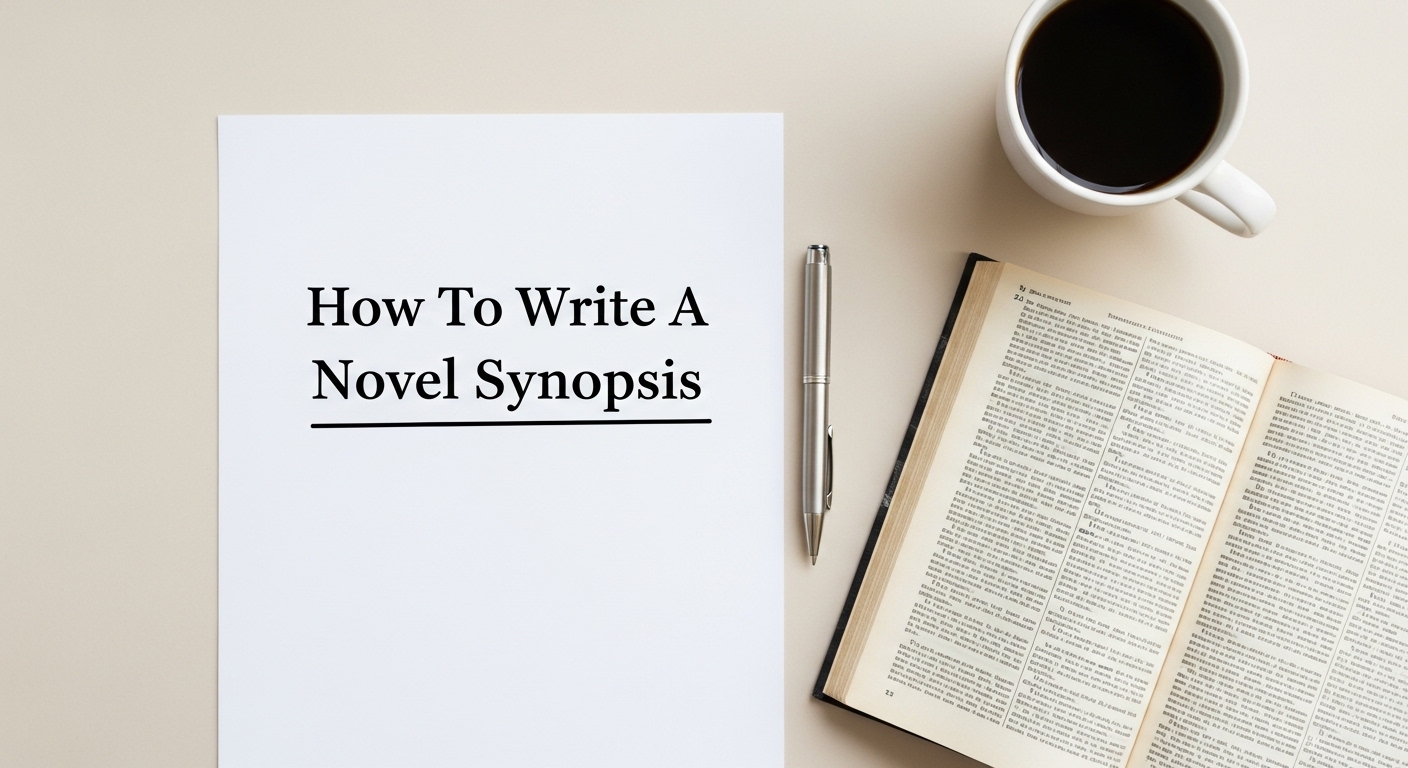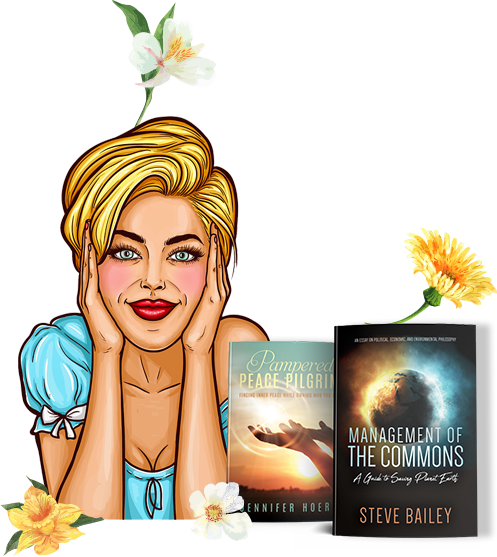
Writing a novel is an enormous accomplishment. Yet, boiling down your 80,000+ words into a one- or two-page synopsis might feel like an impossible task. A novel synopsis is more than just a summary — it’s your first impression with agents, editors, and publishers. It shows your storytelling skills, narrative structure, and ability to convey essential plot details with clarity. Whether you’re preparing a query package or entering a writing competition, mastering the synopsis is key to getting your book noticed.
This guide will walk you through every step of crafting a compelling, professional synopsis — including what to include, how to format it, how to revise it, and when to seek editing or proofreading help to ensure perfection.
Table of Contents
ToggleWhat Is a Novel Synopsis and Why Do You Need One?
A novel synopsis is a brief, comprehensive summary of your story, typically ranging from 500 to 1,000 words. It includes the beginning, middle, and end — even the spoilers. Unlike a back-cover blurb that teases readers, a synopsis is a functional document intended for professionals who need to assess the viability and coherence of your manuscript.
Agents and publishers use your synopsis to determine:
- Whether your plot works from beginning to end
- If your character arcs are believable and engaging
- How well you understand narrative structure
- If your story aligns with their publishing goals or audience
In short, it’s your book’s blueprint. It reveals your storytelling capability and your professionalism.
Key Elements of a Strong Synopsis
Your synopsis should clearly present the core story without overwhelming the reader with subplots or minor characters. The most effective ones do the following:
- Introduce the Protagonist and Their Goal
Begin by introducing your main character and what they want. Mention their name, age (if relevant), and a few traits that define them. Immediately ground the reader in who they are following and what they’re trying to achieve.
Example: “Emma, a 28-year-old botanist, is determined to reclaim the family orchard her father lost to debt.”
- Present the Inciting Incident
What sets the plot in motion? The inciting incident is the event that changes the status quo and launches the protagonist into action. Make it clear, immediate, and significant.
Example: “When a mysterious letter from a long-lost relative reveals hidden inheritance rights, Emma travels to the small town she swore she’d never return to.”
- Show the Rising Action and Conflicts
Include the key turning points that escalate the conflict. Focus on the protagonist’s challenges, major decisions, and relationships that shape the story. Don’t try to summarize every scene — highlight what drives the plot forward.
Include:
- Internal and external conflicts
- Antagonist’s role
- Choices that raise the stakes
- Detail the Climax
Reveal the story’s most dramatic moment — the emotional or physical confrontation that decides the outcome. Don’t hold back the ending in a synopsis. Publishers want to know that you’ve written a complete and satisfying narrative.
Example: “In a final confrontation with her uncle, Emma must choose between exposing a painful family secret or securing her claim to the land.”
- Include the Resolution
Explain how the story ends. The final paragraph should show how the protagonist has changed and what’s at stake emotionally or thematically. Leave the reader with a sense of closure.
Example: “Emma lets go of vengeance and decides to start anew, transforming the orchard into a cooperative community farm.”
How to Structure Your Synopsis
A clear and consistent structure makes your synopsis more readable and professional. Follow these formatting and style tips:
- Write in third person, present tense (even if your novel is in first person or past tense)
- Stick to one to two pages, unless otherwise specified
- Use single spacing with a blank line between paragraphs
- Avoid dialogue unless a line is absolutely essential
- Use proper names instead of “he” or “she” to avoid confusion
- Focus on clarity over style — this is not the place to show off poetic prose
Your synopsis should read like a short story — streamlined, focused, and emotionally resonant.
Common Mistakes to Avoid
Even strong writers stumble when summarizing their own work. Here are pitfalls to steer clear of:
- Being Vague or Overly Abstract
Don’t hide key details behind vague language or metaphors. Be concrete and direct.
Bad: “He faces many obstacles and learns to be brave.”
Good: “He is arrested for theft and must choose between jail time or joining a secret government mission.”
- Omitting the Ending
Agents want to know the full plot — including twists and the final resolution. Don’t “tease” the end like a movie trailer.
- Overloading with Characters or Subplots
Stick to your protagonist and maybe one or two key supporting characters. Cut anything not essential to the main arc.
- Focusing Too Much on Backstory
Backstory should only be included if it directly affects the plot. Start with the present conflict.
Editing and Proofreading Your Synopsis
Once your synopsis is drafted, take time to revise and refine it. An unpolished synopsis, even for a brilliant novel, can cost you opportunities. Treat your synopsis as a professional deliverable, not an afterthought.
Self-Editing Tips:
- Read it aloud to catch awkward sentences or unclear ideas
- Highlight each paragraph’s function — does it move the story forward?
- Replace passive constructions with active verbs
- Tighten wordy passages and remove redundancies
- Eliminate adjectives or adverbs that clutter rather than clarify
Proofreading Strategies:
- Double-check character name consistency
- Correct grammar, punctuation, and typos
- Watch for tense shifts or unclear pronouns
When to Seek Professional Help
If you’re unsure about your synopsis or have received rejections, it might be time to work with a professional editor or proofreader. They can help:
- Clarify confusing sections
- Refine tone and flow
- Ensure your writing aligns with industry expectations
Many publishing professionals offer synopsis critiques as part of manuscript editing packages. Investing in this service can make a critical difference during the submission phase.
Tailoring Your Synopsis for Different Uses
Not all synopses serve the same purpose. Depending on where you’re submitting your manuscript, the format might vary.
For Literary Agents:
Most agents request a one-page synopsis, with a few accepting longer versions. Always check submission guidelines before sending.
For Publishers:
Some publishers ask for a chapter-by-chapter summary in addition to a general synopsis. Be ready to adapt your materials.
For Competitions or Grants:
Competitions often have strict word counts. You may need to create a condensed 250–300 word version, sometimes called a “short synopsis.”
Having multiple versions on hand — brief, standard, and detailed — saves time when opportunities arise.
Using Your Synopsis During Self-Publishing
Even if you’re self-publishing, writing a synopsis is still worthwhile. You can use your synopsis to:
- Develop back-cover copy
- Pitch your book to reviewers or influencers
- Craft elevator pitches or loglines
- Provide material for marketing and press kits
A clear synopsis also helps you maintain consistency across promotional platforms — especially if you later hire freelance editors, cover designers, or publicists.
Final Thoughts: Turn Complexity into Clarity
Think of the synopsis as a bridge between your sprawling novel and the business side of publishing. While it can feel intimidating to condense your work, remember this: if you’ve written a novel, you already have the skill to shape a gripping, coherent narrative. Writing a synopsis is just another form of storytelling — one with its own constraints and power.
By approaching it with structure, precision, and patience — and giving it the editing and proofreading attention it deserves — you’ll create a synopsis that opens doors and speaks confidently on behalf of your book.
FAQs
- Should I include dialogue in my synopsis?
Only if it’s essential. Generally, keep dialogue to a minimum. - Can I write my synopsis in first person?
No. Always use third person, present tense for professionalism and clarity. - What if my book has multiple points of view?
Focus on the central storyline and choose one POV character as the anchor, unless multiple are crucial. - Is it okay to write more than two pages?
Only if the agent or publisher specifically allows it. Otherwise, stay within one to two pages. - Do I need a professional editor for my synopsis?
Not mandatory, but strongly recommended for polish, especially if you’re querying or submitting to publishers.





